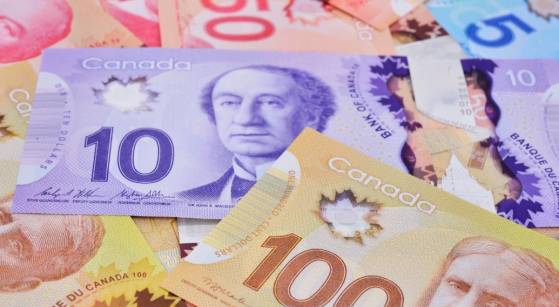Stocks fell for a fifth day, but the sovereign bonds gained, a hint that the market catalyzer shifted from the hawkish Federal Reserve (Fed) pricing – where stocks and bonds fall at the same time, to recession fears, where stocks remain under pressure, while investors seek refuge in safer sovereign assets.

The latest data showed that around $5 billion flowed into US bond ETFs over the past week. Ishares 7–10-year Treasury bond ETF is up by more than 7% since the October dip, up by 3% since the beginning of December and should recover further as investors are expected to return to bonds before they return, sustainably to equities.
The S&P500's latest bear market rally is weakening by the day. The index gave back another, though a slim 0.20% yesterday, and closed near its 100-DMA.
The US 10-year yield slipped below its own 100-DMA for the first time since August – when investors were pricing recession fears remember – although at that time recession fears fed into softer Fed expectations and boosted the stock valuations. Today, it's not the case. The recession fears only increase worries about the future health of the economy, as Fed expectations remain relatively hawkish.
The falling yields kept the US dollar under pressure below the critical 200-DMA, which stands at 105.75.
The EURUSD hovers around the 1.05 mark following the dollar's waltz, while Cable is holding on to its gains above the 200-DMA, near 1.2125, but remains perfectly at the mercy of the next move from the greenback.
Oil's dive
One big move of the day is oil. The barrel of American crude slipped below the $73 floor and fell to $71.70 on the back of rising recession fears.
The fact that the Europeans revised their Q3 GDP higher, that Germany revealed a weaker-than-expected contraction in industrial production, that the Chinese continue relaxing Covid measures, and that the Chinese central bank promised to keep financial conditions soft enough to boost economic growth – and reverse the economic disaster, did nothing to improve the mood. The latest news and data remained fully in the shadow of a sharp 8.7% fall in Chinese exports in November released yesterday. The US crude oil inventories fell more than 5 mio barrels last week, but the gasoline inventories rose more than 5 mio barrels, making the data difficult to give direction.
Read next: BMW Was Fined 30,000 Pounds By CMA, Google Wants To Become More Productive| FXMAG.COM
But note that we have started seeing a structural change in the oil markets. Crude price curve was in backwardation up until a month ago. But over the past weeks we started seeing the front-end of the price curve falling and even going back to contango. That means that immediate demand for oil is weakening due to recession fears, and that we may not see a soft landing in the US economy, even less in the world economy next year. The latter could further weigh on crude prices, and we could see the price of a barrel slip below $70 before the year-end.
The 'only' good news...
The softening US dollar gives other pairs space to breathe. This is perhaps why we see the European companies posting mild losses. The German Dax index lost only about 2% since it peaked early December, whereas the S&P500 lost the double that amount, a bit more than 4%.
And if the softer dollar helped some majors like euro and sterling keep their head above water, the USDCAD advanced to 1.37 yesterday, even after the Bank of Canada (BoC) decided to go ahead with a 50bp hike, instead of 25bp, but didn't say that there will be more rate hikes – an absence which has been interpreted as 'maybe there will be no more hikes'.
Of course, the sharp drop in oil prices does impact Loonie negatively as there is a clear positive correlation between oil prices and the Canadian dollar. Therefore, if crude oil continues its journey south, there is little to prevent the USDCAD to advance past the 1.38 level. The only thing that could slow down the Loonie's fall, is the dollar's global depreciation. Otherwise, the year-end outlook for the Loonie looks rather bearish.
If all this is not depressing enough...
Russian President Vladimir Putin said that the nuclear threat is rising and didn't say he wouldn't use a nuclear weapon to defend itself, giving a fresh boost to geopolitical tensions.
Gold may have benefited from rising safe haven flows – although the US dollar remains the ultimate safe haven if you fear a further escalation of military tensions with Russia.
What also made gold and silver shine yesterday – besides from the softer US dollar - was news that China increased its bullion reserves for the first time in three years, in an effort to diversify away from the US dollar. The price of an ounce rebounded to $1790. In this short run, gold bulls will likely see further resistance above the 200-DMA, and the $1800 psychological resistance. But the weakening US dollar outlook strengthens appetite for gold in the medium run. There is potential for around $100 rise to $1880, May peak.











![Warsaw Stock Exchange: Brand24 (B24) - 1Q23 financial results Turbulent Q2'23 Results for [Company Name]: Strong Exports Offset Domestic Challenges](/uploads/articles/2022-FXMAG-COM/GPWA/gpw-s-analytical-coverage-support-programme-wse-2-6311cd4191809-2022-09-02-11-30-41-63175bda84812-2022-09-06-16-40-26.png)









![Warsaw Stock Exchange: Brand24 (B24) - 1Q23 financial results Turbulent Q2'23 Results for [Company Name]: Strong Exports Offset Domestic Challenges](https://www.fxmag.com/media/cache/article_small_filter/uploads/articles/2022-FXMAG-COM/GPWA/gpw-s-analytical-coverage-support-programme-wse-2-6311cd4191809-2022-09-02-11-30-41-63175bda84812-2022-09-06-16-40-26.png)


